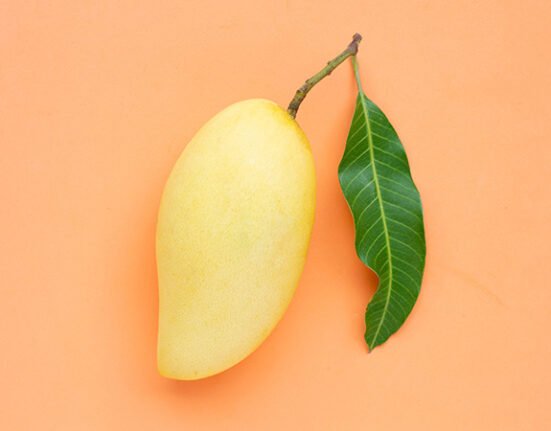When repotting a snake plant, it is essential to assemble all necessary materials beforehand. A new pot, slightly larger than the current one, and fresh potting soil are required. Having a trowel or small shovel available will facilitate the repotting process.
It is also recommended to wear gloves to protect your hands from the sharp edges of the snake plant’s leaves. Once all materials are gathered, you can proceed to prepare the new pot for the snake plant.
Key Takeaways
- Gather all necessary materials before starting the repotting process, including a new pot, soil, and gloves.
- Prepare the new pot by adding a layer of soil at the bottom and ensuring it is the right size for the snake plant.
- Carefully remove the snake plant from its current pot, being mindful of the roots and avoiding any damage.
- Inspect the roots for any signs of rot or damage, and trim as necessary before placing the plant in the new pot.
- After repotting, water the snake plant thoroughly and place it in a suitable location with proper care to help it adjust to its new environment.
Prepare the New Pot
Adding a Drainage Layer
Once you have all of your materials gathered, it’s time to prepare the new pot for the snake plant. Start by adding a layer of gravel or small rocks to the bottom of the pot to help with drainage.
Filling with Potting Soil
Then, fill the pot about one-third of the way full with fresh potting soil. Make sure to choose a well-draining potting mix that is specifically designed for succulent plants like the snake plant.
Inspecting the Roots
Once the pot is prepared, you can carefully remove the snake plant from its current pot and inspect the roots.
Remove the Snake Plant from its Current Pot
Carefully remove the snake plant from its current pot by gently tipping it on its side and sliding the plant out. If the plant is stuck, you can gently tap on the sides of the pot to loosen it. Once the plant is out of the pot, carefully brush away any excess soil from the roots.
Be gentle to avoid damaging the roots, as they are essential for the plant’s health and growth. Once the roots are exposed, you can inspect them for any signs of damage or rot. To remove the snake plant from its current pot, gently tip it on its side and slide the plant out.
If the plant is stuck, you can gently tap on the sides of the pot to loosen it. Once the plant is out of the pot, carefully brush away any excess soil from the roots. Be gentle to avoid damaging the roots, as they are essential for the plant’s health and growth.
Once the roots are exposed, you can inspect them for any signs of damage or rot.
Inspect the Roots
| Step | Description |
|---|---|
| 1 | Prepare a new pot with drainage holes |
| 2 | Remove the snake plant from its current pot |
| 3 | Inspect the roots and trim if necessary |
| 4 | Place the plant in the new pot and add soil |
| 5 | Water the plant and let it settle in its new pot |
| 6 | Place the pot in a suitable location with indirect sunlight |
After removing the snake plant from its current pot, take some time to inspect the roots for any signs of damage or rot. Healthy snake plant roots should be firm and white, while damaged or rotting roots may be mushy and discolored. If you notice any damaged roots, carefully trim them away with a clean pair of scissors or pruning shears.
It’s important to remove any damaged roots before repotting the snake plant to prevent further issues down the line. Once you have inspected and trimmed the roots, you can proceed with repotting the snake plant in its new pot. After removing the snake plant from its current pot, take some time to inspect the roots for any signs of damage or rot.
Healthy snake plant roots should be firm and white, while damaged or rotting roots may be mushy and discolored. If you notice any damaged roots, carefully trim them away with a clean pair of scissors or pruning shears. It’s important to remove any damaged roots before repotting the snake plant to prevent further issues down the line.
Once you have inspected and trimmed the roots, you can proceed with repotting the snake plant in its new pot.
Repotting the Snake Plant
Now that you have prepared the new pot and inspected the roots, it’s time to repot the snake plant. Carefully place the plant in the center of the new pot and fill in any empty space with fresh potting soil. Gently pat down the soil around the base of the plant to secure it in place.
Be sure not to bury the plant too deeply, as this can lead to issues with rot and suffocation. Once the plant is securely in place, give it a thorough watering to help settle the soil and hydrate the roots. After preparing the new pot and inspecting the roots, it’s time to repot the snake plant.
Carefully place the plant in the center of the new pot and fill in any empty space with fresh potting soil. Gently pat down the soil around the base of the plant to secure it in place. Be sure not to bury the plant too deeply, as this can lead to issues with rot and suffocation.
Once the plant is securely in place, give it a thorough watering to help settle the soil and hydrate the roots.
Water and Care for the Newly Repotted Snake Plant
Watering After Repotting
Water the plant thoroughly after repotting, but be cautious not to overwater, as this can lead to root rot. Allow the soil to dry out slightly between waterings to prevent issues with moisture retention.
Providing Optimal Lighting
Place your newly repotted snake plant in a location with bright, indirect sunlight to promote healthy growth.
Ensuring a Smooth Transition
With proper care and attention, your snake plant should thrive in its new pot. By following these simple steps, you can help your plant adjust to its new home and enjoy its beautiful foliage for years to come.
Troubleshooting Common Repotting Issues
While repotting a snake plant is generally a straightforward process, there are some common issues that may arise during or after repotting. One common issue is transplant shock, which can cause your snake plant to wilt or droop after being repotted. To help alleviate transplant shock, be sure to water your newly repotted snake plant thoroughly and place it in a location with plenty of indirect sunlight.
Additionally, be sure not to overwater your newly repotted snake plant, as this can lead to issues with root rot. Another common issue that may arise after repotting a snake plant is overwatering. Overwatering can lead to issues with root rot and suffocation, so it’s important to allow the soil to dry out slightly between waterings.
If you notice that your newly repotted snake plant is showing signs of overwatering, such as yellowing leaves or mushy stems, be sure to adjust your watering schedule accordingly. In conclusion, repotting a snake plant is a simple process that can help promote healthy growth and prevent issues with overcrowding and root rot. By gathering all necessary materials, preparing a new pot, carefully removing and inspecting the roots, and providing proper care and attention after repotting, you can ensure that your snake plant thrives in its new home.
With these step-by-step instructions and troubleshooting tips in mind, you can confidently repot your snake plant and enjoy watching it flourish in its new pot.
FAQs
What is a snake plant?
A snake plant, also known as Sansevieria, is a popular indoor plant known for its tall, upright leaves and low maintenance requirements. It is often chosen for its air-purifying qualities and ability to thrive in low light conditions.
Why would I need to repot a snake plant?
Snake plants may need to be repotted if they have outgrown their current container, if the soil has become compacted and waterlogged, or if the plant is showing signs of distress such as yellowing leaves or stunted growth.
When is the best time to repot a snake plant?
The best time to repot a snake plant is in the spring or early summer, when the plant is entering its active growing phase. Avoid repotting during the winter months when the plant is dormant.
What materials do I need to repot a snake plant?
To repot a snake plant, you will need a new pot that is slightly larger than the current one, fresh potting mix, gloves, a trowel or small shovel, and a watering can.
How do I repot a snake plant?
To repot a snake plant, gently remove it from its current container, loosen the roots, and place it in the new pot with fresh potting mix. Water the plant thoroughly and place it in a location with bright, indirect light.
How often should I repot my snake plant?
Snake plants generally only need to be repotted every 2-3 years, or when they have outgrown their current container. It’s important to monitor the plant’s growth and the condition of the soil to determine when repotting is necessary.






